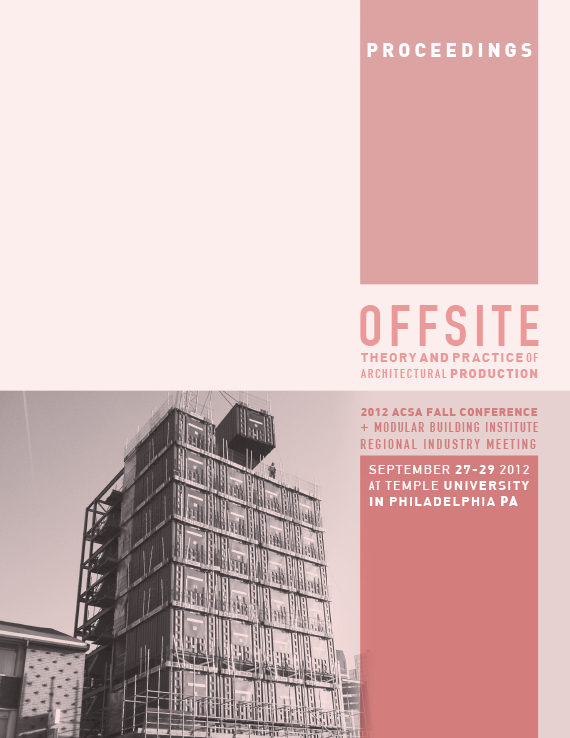Author(s): Dana K. Gulling
There is still a division in the architectural community between theory-baseddesigners and those of us who look to building technology as regulators fordesign. Theory-based designers seem to promote complexity over simplicity,using parametric modeling to generate complex geometric forms and computeraided manufacturing (CAM) equipment for building fabrication. This contrastsgreatly with designers who are interested in building technology. We are oftencalling for design restraint, citing important governing issues such as constructability(both on and off site), integration, performance, and detailing. Theseconstraints are valued for their performance, but we often do not speak of themin terms of their potential resulting effects on building aesthetics. This lackof engagement with aesthetics forces the choice between art-form and reality.Instead, could we as building technologists promote aesthetics through thedesign of our buildings? Our art-form would favor repetition, rhythm, restraintand simplicity of form.As building technologists, we often avoid discussions of aesthetics. Even thisFall 2012 ACSA conference, Off-site, has theory listed in its call for abstracts,but does suggest aesthetics in its list of potential topics.1 Here, theory is reducedto construction, production, and fabrication, without discussing thepossibility of aesthetics. The drawback of not discussing the art-form of architectureis that it appears that we assume that construction, production, andfabrication will dictate form. I would argue that although production methodscan affect form they do not dictate form. Architects such as Frank Gehry, ZahaHadid, and Greg Lynn design buildings that typically use complex curves. Theoffices must collaborate with fabricators to use software and CAM technologiesto design and fabricate both structure and skin. In comparison, Foster’s GreatCourt at the British Museum makes use of the same equipment to constructthe glass and steel roof. Foster’s addition at the British Museum is not complex.It is a simple section of a torus. This demonstrates that the constructiontechnologies do not dictate form; rather the designers have differing aestheticvalues. The aesthetics guide Foster’s building can also be expanded to includesimilar architects that use restraint in their designs. Those include Tadeo Ando,Peter Zumthor, and Glen Murcutt.This paper will seek out theories that establish the aesthetic value of buildingsdesigned with restraint. This paper will survey contemporary theories (withinthe past 15 years) that value design restraint as an art-form. Based on availabletheories and writings found, this paper will use case studies that demonstratethese aesthetic values. Issues of rhythm, light, repetition, proportions,contextualization, and exterior space will be addressed. This paper will beginto establish the artistic value that building’s designed using the constraintsoffered by building technologies. This expands our value beyond isolating issuesof construction, details, integration, and sustainability to both designerand builder.1 It lists history of architectural production, modularization and prefabrication;production theory and criticism; postulation, speculation on future ofarchitectural production; parametric modeling and CNC production speculations;and design case studies, prototypes and experiments. http://acsa-arch.org/programs-events/conferences/fall-conference/2012-fallconference/call-forabstracts.Accessed 29 March 2012
Volume Editors
John Quale, Rashida Ng & Ryan E. Smith
ISBN
978-0-935502-85-5

 Study Architecture
Study Architecture  ProPEL
ProPEL 
